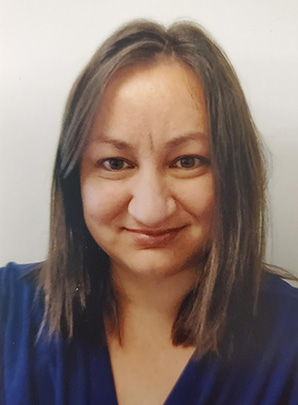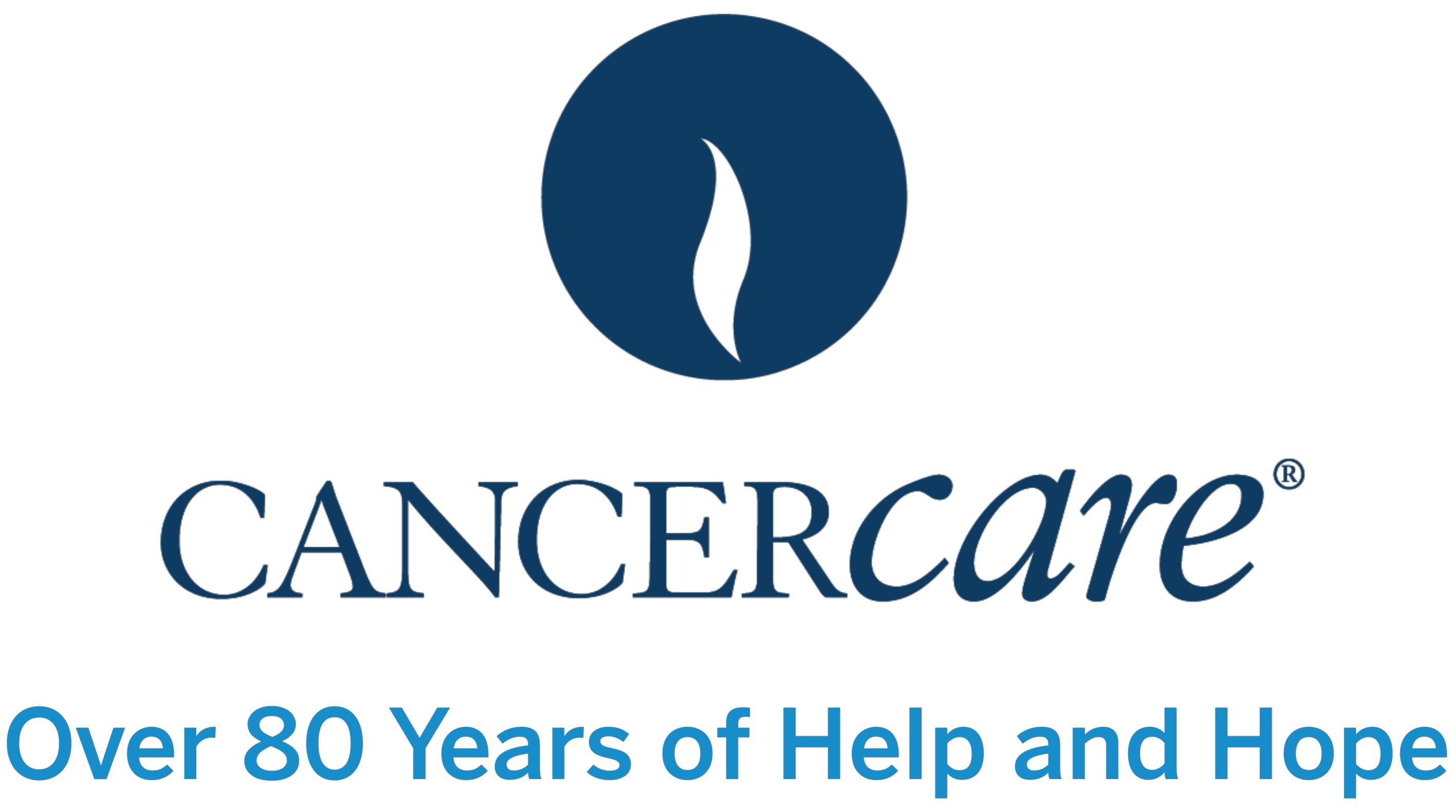Questions & Answers about Lung Cancer
You can also browse all resources about lung cancer»
- Q.
My 68-year-old husband was diagnosed with lung cancer, had radiation and chemo, and is currently in remission. Since ending his treatment, his personality has changed drastically and he directs his anger towards me. Can chemo affect a person mentally?
A.Chemotherapy can affect a person’s mood, as can other medications such as steroids. It is important that you and your husband inform his doctor of changes in his mood to rule out any medical causes. The change in his personality may also be a sign that he is still struggling emotionally with his diagnosis and treatment. Cancer can be overwhelming and bring up many feelings from anxiety to anger to sadness. As your husband’s primary caregiver, those feelings may be directed towards you since you are the one he is closest to and trusts. If you haven’t done so already, letting your husband know how his feelings and behavior affect you is important. Seeking couple’s counseling is also a good idea if you are having difficulties communicating with each other.
The end of treatment often can lead to many strong and conflicting feelings. When a person is first diagnosed with cancer, he/she is often focused on learning about the diagnosis and getting through treatment. This can delay the emotional impact of cancer and feelings may come up once treatment ends, as there is more time to think about what has happened. For more information on coping post-treatment read, After Treatment Ends: Tools for the Adult Cancer Survivor.
 Answered by
Answered by
Sarah Kelly, MSW, LCSW-R - Q.
My husband has just been diagnosed with small cell lung cancer with small tumors in his liver. He starts chemo next week with 4 hours, day 1 and 2 hours, day 2 and 3. He repeats this every 18 days for six sessions. Is this the normal treatment for small cell lung cancer? Where would I look to find information on clinical trials?
A.Later-stage small cell lung cancer is characterized by a spread of the disease from the lungs to other organs such as the liver, and is normally treated with aggressive chemotherapy. Since the treatment is aggressive, it must be administered over a number of days for each session, and the sessions are spaced out with non treatment breaks of 18 to 21 days to make sure that the patient’s overall health is not affected. Patients whose tumors respond well to chemotherapy may be considered for a radiation treatment to the brain called Prophylactic Cranial Irradiation (PCI) in which the entire brain receives radiation with the intent of stopping the spread of the disease. For more information about the treatment of small cell lung cancer, please visit the National Cancer Institute’s website.
CancerCare collaborates with EmergingMed’s clinical trials matching service, which is designed to assist lung cancer patients in identifying and accessing clinical trials which may be appropriate to their medical situation.
 Answered by
Answered by
Winfield Boerckel, MSW, MBA, LCSW-R - Q.
How can I breathe with a lung after the pneumonectomy? Is there anything I should be doing?
A.A pneumonectomy is the surgical removal of one lung in which a lung cancer tumor involves all the lobes of that lung and is confined to only that area. A person with two normal lungs would be able to tolerate the impact of the reduced lung capacity on their breathing. However, people who have a history of smoking, emphysema, or bronchitis may not be candidates for this treatment due to their diminished overall lung capacity. Age may also play a role as people over age 70 have a higher risk of complications from this procedure.
Be proactive with your doctor about what your recovery plan will be. A patient who has completed a pneumonectomy will be expected to undergo a course of pulmonary rehabilitation with a respiratory therapist, who will guide the patient through regular exercises and techniques designed to help maximize breathing capacity.
Learn more about the professionals who might be part of your recovery team in our fact sheet, “Your Health Care Team: Your Doctor is Only the Beginning”.
Listen to our podcast, The Importance of Communicating with Your Doctor About Follow-Up Care.
- Q.
My sister has stage 4 non-small cell lung cancer as well as tumors in her liver. Are there two different chemotherapy treatments for both the lung and the liver or are they treated with the same drugs?
A.Stage 4 non-small lung cancer is characterized by the spread (also known as metastasis) of lung cancer cells through the bloodstream to organs outside the lungs such as the liver, brain, adrenal glands or bones. These cells attach to the new areas and begin to grow new tumors. The cells of the new tumor site, however, are lung cancer cells rather than liver cancer cells. So the chemotherapy your sister’s oncologist has chosen to treat the main tumor site in the lungs would also be considered the most appropriate treatment for the lung cancer tumors that have grown in her liver.
One of the benefits of chemotherapy used for Stage 4 lung cancer is not only that it’s treating tumors known to exist, but it is also working on other tumors that may be too small to be detected yet. That’s why chemotherapy is considered a systemic therapy - it treats cancer tumors throughout the body.
Find more information about treatments for lung cancer in our booklet, Treatment Update: Lung Cancer.
CancerCare also offers a full range of free support services for people affected by lung cancer.
 Answered by
Answered by
Winfield Boerckel, MSW, MBA, LCSW-R - Q.
I was diagnosed with non-small cell lung cancer and am receiving chemotherapy. I've had two colds within a three-week period and also a low level of hemoglobin in my blood (the doctor has recommended erythropoietin treatments). Could these issues be diet related?
A.Chemotherapy for either small cell or non-small cell lung cancer tends to be fairly aggressive and can produce some difficult side effects. While chemotherapy is focused on destroying lung cancer cells it can also interferes with the production of the three types of blood cells: red blood cells, white blood cells, and platelets. Normally, just before you start a chemotherapy session, your doctor arranges for you to have blood tests to determine the effect the chemotherapy is having on your blood cells. Low counts of any of these cells may prompt either a change in dosage or frequency of treatment, or a need to take medication that can stimulate bone marrow production of the blood cells.
Your colds may be due to the chemotherapy’s suppression of the bone marrow’s production of white blood cells, which are the body’s infection fighters. If your doctor feels that your white cell count has significantly decreased, he or she may consider putting you on a medication for this condition. Ask your doctor whether this might be a possibility.
Similarly, the low levels of hemoglobin you mention may be due to low red blood cell counts caused by chemotherapy. Red blood cells carry oxygen and iron to provide the body with components necessary for energy. Red blood cells are an important factor in maintaining energy levels in our bodies and too few of them can result in fatigue and anemia. It sounds like your doctor believes an erythropoietin-type drug might be helpful in boosting your red blood cell count. While extreme low red blood cell counts are not normally related to diet, you might also want to ask your doctor for a referral to a dietitian who works with cancer patients to develop a meal plan that would increase your dietary intake of iron and help you maintain a healthy weight.
CancerCare offers publications that provide more detailed information on managing chemotherapy side effects.
 Answered by
Answered by
Winfield Boerckel, MSW, MBA, LCSW-R - Q.
I was diagnosed with stage IB non-small cell lung cancer. I had surgery (lobe resection) and my doctor gave me a referral to an oncologist for "adjuvant treatment," meaning chemotherapy. Why do I need to do this?
A.For a long time, it was believed that only surgery was necessary to achieve a successful outcome for lung cancer patients diagnosed with stage IB to IIIA non-small cell lung cancer. However, a number of recent investigational research studies provided evidence that patients who received both surgery as their primary treatment and chemotherapy as an “adjuvant,” or secondary treatment, reduced their risk of the cancer recurring. Unlike chemotherapy used as a primary therapy, adjuvant chemotherapy is usually shorter-term and has a fixed duration.
You should discuss any of your concerns about the side effects of chemotherapy with your oncologist before treatment starts. I do want to say that there are significantly fewer, less severe side effects in current-day chemotherapy treatments and much more can be done to address them.
For more information on lung cancer staging and treatment, read our lung cancer publications
View all of CancerCare’s publications about managing side effects.
 Answered by
Answered by
Winfield Boerckel, MSW, MBA, LCSW-R - Q.
My husband has been diagnosed with Stage IIIA non-small cell lung cancer that had spread to the mediastinal nodes. I have heard that the five-year survival rate for this type of cancer is 15% or approximately two years. Is this correct?
A.The American Society of Chest Physicians indicates that the five-year survival rate for Stage IIIA non-small-cell lung cancer (NSCLC) ranges from less than 10% to 40% and is dependent on the extent of mediastinal lymph node involvement. NSCLC type (squamous cell, adenocarcinoma or large cell carcinoma) may also influence survival rates.
It is important to keep in mind that the primary purpose of staging a cancer is to make sure that the correct treatment protocols are utilized, rather than to predict survival. Survival rates do not represent the experience of any individual lung cancer patient. They are statistical figures which are comprised of data collected on thousands of cancer patients and then calculated to develop the average or median computation for that very large group.
Many factors influence lung cancer survival including a patient’s age, overall state of health prior to diagnosis, healthy lifestyle, compliance to treatment regimens and response to treatment. Very often, newly diagnosed patients who join CancerCare’s lung cancer patient support groups have poor survival prognoses, yet survive for significantly longer periods than anticipated.
One valuable coping strategy we have learned from these group members over the years is “staying in moment.” Using our physical and emotional strengths on today’s issues, rather than trying to solve the unknowns of the future, appears to be one of the most effective ways of living each day with lung cancer.
You can also find comprehensive information about lung cancer on CancerCare’s website, www.lungcancer.org.
- Q.
My wife was diagnosed with stage IV non-small cell lung cancer (NSCLC) and we have health insurance. One of her chemotherapy drugs is very expensive and insurance only pays $1000 per chemo treatment. She is 63 and does not qualify for Medicare. We are looking at co-payment debt of over $100,000. Any suggestions?
A.We often find that the private health insurance we have is fine when you are healthy, but not sufficient enough when diagnosed with cancer. Unfortunately, you are correct that she must either be 65 years old or determined to be disabled by the Social Security Administration for 24 months before qualifying for Medicare. I suggest you begin the disability application process if you have not already. Certain cancer diagnoses qualify for expediting the application process (called Compassionate Allowances). You can find out more about the qualifications and can apply online or call to speak with a Social Security representative about your specific situation.
Co-pay foundations are independent charities that assist insured patients who qualify with the co-pay costs of their pharmaceutical products. Current charities that assist non small-cell lung cancer (NSCLC) patients are:
- CancerCare Co-Payment Assistance Foundation
- Good Days
- The Patient Advocate Co-Pay Relief Foundation
- Patient Access Network Foundation
CancerCare also offers limited assistance for transportation, homecare, and childcare for patients who qualify. Some local divisions of the American Cancer Society may also have help with transportation to treatment as well as assistance with wigs.
The Patient Advocate Foundation’s trained case managers provide guidance and support and can intervene on your behalf regarding medical debt. They also maintain a network of volunteer attorneys.
Lawhelp.org provides referrals for affordable and/or free legal assistance programs in one’s area and advice about bankruptcy protection and other financial issues.
And finally, you may read our fact sheets about finding financial assistance in your community for further suggestions:
 Answered by
Answered by
Michele McCourt, Executive Director of the CancerCare Co-Payment Assistance Foundation - Q.
My husband has recently been diagnosed with stage 4 small cell lung cancer and can no longer work. How do we pay our bills? I still work, but I don't make enough money. Any advice would be appreciated.
A.The onset of cancer is a very difficult time for many families financially, with loss of income and the costs of treatment adding to the stress they must cope with. To locate possible resources, I’d suggest the following:
Visit the website of the Cancer Financial Assistance Coalition (CFAC), which offers a database that allows you to search for assistance by either diagnosis or resource type. In addition, there is information on finding assistance.
Order a copy of “A Helping Hand: The Resource Guide for People With Cancer, Financial Edition,” which is available free of charge through CancerCare’s publication order form.
Apply for disability benefits through the Social Security Administration.
Read our fact sheets “Sources of Financial Assistance” and “Finding Resources in Your Community.”
The American Cancer Society also offers a searchable database for local resources that can help you find assistance.
 Answered by
Answered by
Winfield Boerckel, MSW, MBA, LCSW-R - Q.
My mother has had colon and breast cancer. She now faces a nodule in her lower right lung. Doctors say it is definitely cancer, but are not sure what type (lung cancer or metastasis of the colon or breast). Is a lung biopsy the only way to find out what kind of cancer it is?
A.Before treatment starts, it is extremely important that the doctor know exactly what kind of cancer is to be treated, as treatment varies with different kinds of cancer. The only way that the kind of cancer can be accurately identified is to have a section of tissue removed from the tumor or nodule so that it may be examined under a microscope by a pathologist, who can identify the cancer cell type and advise the patient’s doctor.
You and your mother may find the following articles from the American Society of Clinical Oncology’s website can provide you with some helpful insights on biopsies and their results:
- Q.
My best friend's husband has just started chemo for lung cancer but refuses to quit smoking. This is driving a huge wedge between the two of them. Does smoking impact the effectiveness of the chemo?
A.This is a common question that comes up for people diagnosed with and in treatment for lung cancer. Some lung cancer patients continue to use tobacco products either because the chemical addiction to nicotine is so strong that they are unable to quit, or they have found that smoking provides them with a soothing or calming effect in stressful situations.
A study featured at the 2006 Annual meeting of the American Association for Cancer Research (AACR) reported that nicotine stopped chemotherapy drugs such as gemcitabine, cisplatin and taxol—all of which figure prominently in first-line treatment of lung cancer—from killing cancer cells and significantly reduced the effectiveness of the treatment, according to the researchers.
In contrast, another 2006 research study, conducted by the M.D. Anderson Cancer Center, focused on the overall survival of late-stage, non-small-cell lung cancer (NSCLC) patients who quit smoking or continued to smoke during treatment. The study, which followed the survival experiences of 1,370 NSCLC patients from 1993 through 2002, found no significant difference in overall survival between these two groups of patients. Among those patients who did survive, however, and who had quit smoking at the onset of their treatment, the risk of developing a second lung cancer was significantly lower.
You shared that your friend’s husband’s smoking is affecting their relationship. CancerCare’s oncology social workers often work with couples in situations like this and are able to help them develop new communications skills which can reduce stress and improve relationships. Please urge your friend to call us at 1-800-813-HOPE (4673).
For more information and resources about smoking cessation, read the American Cancer Society’s Guide to Quitting Smoking or visit Smokefree.gov.
- Q.
I'm in remission after having chemotherapy and radiation for small cell lung cancer. I've recently started having a shortness of breath when I'm at rest (doesn't seem to happen at work). Is there anything I can do?
A.The shortness of breath, or dyspnea, you are experiencing can be uncomfortable and frightening. The more you struggle for air, the harder your lungs work to get oxygen, and the more distressed you feel. It is extremely important to consult a medical professional to find out what might be setting this cycle in motion. Possible causes could be:
- a side effect of chemotherapy or radiation (which may reduce lung capacity)
- anemia, meaning your lungs don’t have enough red blood cells to deliver oxygen throughout your body
- a non-cancer lung condition, like asthma, COPD, or an allergy
- anxiety caused by fears of recurrence, the lasting emotional effects of having had cancer, or other types of stress
Contact the American Lung Association (1-800-LUNGUSA) for information on other possible causes of dyspnea. Depending on its source, a doctor may prescribe a steroidal or anti-anxiety medication, supplements, oxygen, or special exercises. Progressive relaxation, meditation, and guided imagery can all help reduce stress and anxiety. CancerCare has several Connect Education Workshops that address stress management in cancer survivors and Managing the Stress of Survivorship.
To prepare for your doctor’s appointment, keep a record of your breathing problems, with these questions in mind:
- When do you experience shortness of breath?
- When does it feel worst?
- How long does each episode last?
- What is going on around you before, during, and after each episode?
- Does anything make it feel better?
Take your record with you to your appointment. It is very important that a medical professional review your symptoms, especially if you’re also feeling faint and dizzy, if your heart is pounding, or if it’s difficult to breathe even at rest.
CancerCare has information on creating a survivorship care plan that can be used to personalize your post-treatment needs and communicate them to your health care provider.
Don’t be afraid to advocate for yourself so that your medical, emotional, and practical needs are addressed, and your quality of life is maximized.
 Answered by
Answered by
Maria Chi, DSW, MSW, LCSW-R - Q.
How does one get compassionate care in clinical trials when there is nothing left in the way of lung cancer treatments?
A.We believe you are asking about “Compassionate Drug Use” also called “Compassionate Use,” which is the use of therapeutic drugs that have not yet been approved by the FDA to treat cancer, and no other treatments are available. These drugs are called investigational drugs and are usually only available to patients who are participating in a clinical trial. Use of these drugs outside of a clinical trials is extremely limited.
Requests for the compassionate use of an investigational drug must be made via a request from the patient’s doctor to the drug company requesting their permission for its use and their willingness to supply the drug for the patient’s use. If the drug company consents, and frequently they do not, then the doctor must ask the FDA for their permission to use the drug for his or her patient only. The request to the FDA must include detailed medical information about the patient, why the request is necessary, a proposed plan of treatment and the patient’s signed consent. The length of time for FDA approval varies, but may be expedited in emergency situations.
For more information on compassionate drug use, the American Cancer Society provides a helpful reference guide.
 Answered by
Answered by
Winfield Boerckel, MSW, MBA, LCSW-R - Q.
I have stage 4 non-small cell lung cancer and now am receiving Tarceva. I'm trying to prepare for the future by exploring hospice and want support for my husband. Do you know what kind of pain I might expect?
A.There is no easy means of determining how late-stage lung cancer may progress. At times the process can be relatively benign and pain free; at other times, it may cause the person with cancer to deal with discomfort and pain. You have already identified one of the most appropriate resources for managing your situation - hospice care.
Hospice provides some of the best palliative care available and focuses on the patient’s physical, emotional and spiritual comfort. We encourage patients and family members dealing with late-stage cancer to contact local hospices as soon as possible. This gives patients and their loved ones the opportunity to develop a relationship with staff and ask questions (such as how pain and symptoms can be managed) and to determine what services could be helpful. Connecting with hospice often times results in peace of mind for both patient and family members, as needs can be assesed, questions answered, and important next steps identified.
For more information about hospice and end-of-life care, please consult the National Hospice and Palliative Care Organization’s website, Caring Info.
Another resource is our publication, “Caregiving at the End of Life”. And remember that CancerCare’s professional oncology social workers assist lung cancer patients and their loved ones in situations similar to yours and can help them navigate their way through end of life care.
 Answered by
Answered by
Winfield Boerckel, MSW, MBA, LCSW-R - Q.
Are there any live video chat support groups available for people specifically with lung cancer? I'm trying to help a loved one find this type of support. Both live chat and lung cancer specific are important to her.
A.CancerCare offers two types of support groups, one is online and the other is via live, video chat. Our online support groups take place on a message board that is open to members 24/7 and you can post in the group whenever is convenient. The groups are moderated by an oncology social worker who provides support, resources and guides the conversation. Our online groups do not have a particular meeting time and do not include video chat or live chat functionality, such as Zoom. The groups that are offered via video chat are only available to those residing in NY and NJ, in accordance with our social work licensing laws. I have noted the link to our online group for lung cancer and our live chat, video group, depending on where your loved one lives:
Lung Cancer Patient Support Group - Online: https://www.cancercare.org/support_groups/2-lung_cancer_patient_support_group
Living With Cancer: Lung Cancer Patient Support Group - NY and NJ: https://www.cancercare.org/support_groups/73-living_with_cancer_lung_cancer_patient_support_group
CancerCare also has a partnership with a lung cancer advocacy organization called LUNGevity. They offer their own series of virtual support meetups for patients and caregivers. You can see the schedule and register by following this link: https://www.lungevity.org/for-patients-caregivers/support-services/virtual-meetups
LUNGevity also offers peer matching that might be helpful to your loved one. This allows a patient or caregiver to connect with another lung cancer patient or caregiver to get support and encouragement during their cancer journey. Here is the link to that program: https://www.lungevity.org/for-patients-caregivers/support-services/peer-to-peer-mentoring/lifeline-support-partners
I hope this information is helpful. If you would like more information about CancerCare programs or ideas about other support beyond CancerCare, I encourage you to call CancerCare’s Hopeline at 800-813-4673 for more immediate “live” guidance at any point in the future. All the calls are answered by oncology social workers who can offer information, support and resource referrals after learning a bit more about your situation and needs. Our Hopeline hours are Mondays through Thursdays 10 a.m. -5:45 p.m. ET and Fridays 10 a.m. - 4:45 p.m.
 Answered by
Answered by
Victoria Puzo, MSW, LCSW, Online Support Group Program Director
